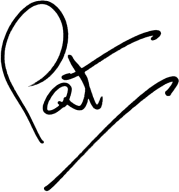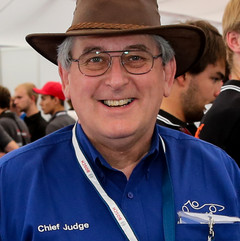Communication
Formula Student was founded with the intention of preparing graduating students for a life in Industry.
What is usually quoted is the 'finishing' of young engineer's education by giving them a 'real' project to complete. The success of this formula can be seen in the number Universities and students involved in the 15 or so events that are held globally each year.
It is not generally recognised that one aspect of 'real world' preparation offered by FS is that of business communication. In the fast communication world in which we live, casual 'text speak' has become commonplace in digital communication between members of the generation that FS is targeted to help.
Of course, this is not acceptable in business communication, yet sadly I see 'text speak' occasionally in team's Design Reports. Even more common is fractured syntax where, when I read the report, I can usually determine what the students are trying to tell me even if the grammar and content is scrambled.
Three forms of FS Communication
The teams have three areas of communication with the judges that need their attention. Firstly, there is the written Design Report, then there are the verbal presentations to the Design Judges and Presentation Judges.
Each communication is different.
The Design Report.
As is often stated, the DR is a technical briefing from one group of engineers (the team) to another group of engineers (the Judges) and should be written as such. It is not a promotional or sales document. It is the type of briefing that will become commonplace when the student graduates and enters business.
It is said that you have only one chance to make a good first impression and in Formula Student, that one chance is your Design Report.
There are rules regarding this document. Eight pages maximum, one free page and three pages, each with a specified drawing of the car, Plan view and front and side elevations. These drawings are to show the judges inside your car design and should support the written information contained in the report.
Note, 'drawings' does not include low resolution screen dumps, 'artist's impressions' or solid model renderings! The drawings should have some dimensioning in order to give an idea of scale and, especially with monocoque chassis, should be cutaway to allow the judges to see 'into' the car.
The 'free' page is best used with additional illustrations, but these should be relevant to the report. An isometric line drawing of the car always helps the judges.
The written portion should be laid out as a formal report. There is enough information out there on report writing that I do not have to elaborate here, but a few reminders are in order.
Firstly, the language of the report is English, proper English! Certainly you should avoid 'text speak' but also be careful with using jargon. Sometimes the jargon or acronyms used are not familiar to the judges.
Do not patronise the reader! Statements like 'We all know...' should be avoided because we don't 'all know'. The judges want to know how 'you know'!
A Design Report written in columns, magazine style, might look nice when printed, but most never get printed. They are viewed on laptops or tablets, where scrolling up and down the columns becomes a pain.
Do not waste a valuable page with a fancy cover sheet and please, put the car number on every page. Your DR should also identify your team with the University name. Judges are not familiar with terms like 'Avantech Racing Team' and struggle to identify which team this is.
Finally, without a good Design Report, a team has no chance of being elevated to the design finals!
Design Judging
Defending your design in front of the Design Judges (and Cost Judges) requires verbal communication at a clear and confident level. It is nor a sales presentation and should focus on the facts rather than the emotions. Students often ask me how they should rehearse for the Design event and my response is always that you shouldn't! If the team members really know their stuff and fully understand the reasons behind the design decisions, then there will be no communication issues during the judging.
Judges do not like when a team launch into a rehearsed presentation! They know immediately the team have been groomed in their presentation and are trained to answer questions leading from it. The result will always be that the judge stops the presentation and starts to ask awkward questions that the students have not prepared for. I have seen several over confident teams 'crash and burn' under these circumstances. Be warned, the judges will not permit the team to take control of the discussion!
Usually, when a judge asks a question about some aspect of your design decisions, he knows the answer! So if you don't know or don't fully understand, you are best advised to admit this! BSing the judges is a sure path to a poor design score!
Several times I have been asked to attend a 'mock' Design Judging. When asked to do so, I quickly identify who is the 'expert' in the team, the one with all the answers. I then tell him he 'Just fell off his bicycle and has been taken to hospital' so the team must proceed without him! This shocks the team, but forces them to dig deeper in defending their design. It also shows the team that an 'expert' is not really necessary as long as each member knows their stuff.
I have never been a Cost Judge, but I imagine the communication and language is similar to Design Judging. Again it is necessary to get points across to the judges in a straightforward and lucid way.
Presentation Judging.
Presentation is a totally different event and requires a different style of communication.
Here, the intent is to generate an emotional response to the presentation, to generate in the judges a desire to be part of this program.
As such, the language is totally different. A passionate presenter, one who really believes in what he is selling, is required. The words chosen, the pitch and presentation are almost as important as the actual meaning of the words!
This is also an important preparation for the real world, where you will, sooner or later, have to sell your dreams in order to fund them.
Design Error of the Month
The rules forbid the use of countersunk allen screws in 'safety critical' applications. This is because we have seen several failures of these fasteners in use when the head broke off.

Here are some examples of incorrect use of these screws.
The first illustration shows a countersunk allen screw anchoring a seatbelt harness.

The next illustration shows a countersunk allen screw used to mount a brake caliper.

The final picture shows the incorrect use of countersunk allen screws to mount a steering wheel. Yes, that really is a Formula Student car!

Until next time, I wish you all a peaceful and happy Christmas and hope you start the new year full of enthusiasm to ensure that FSG 2015 is the greatest event ever.



